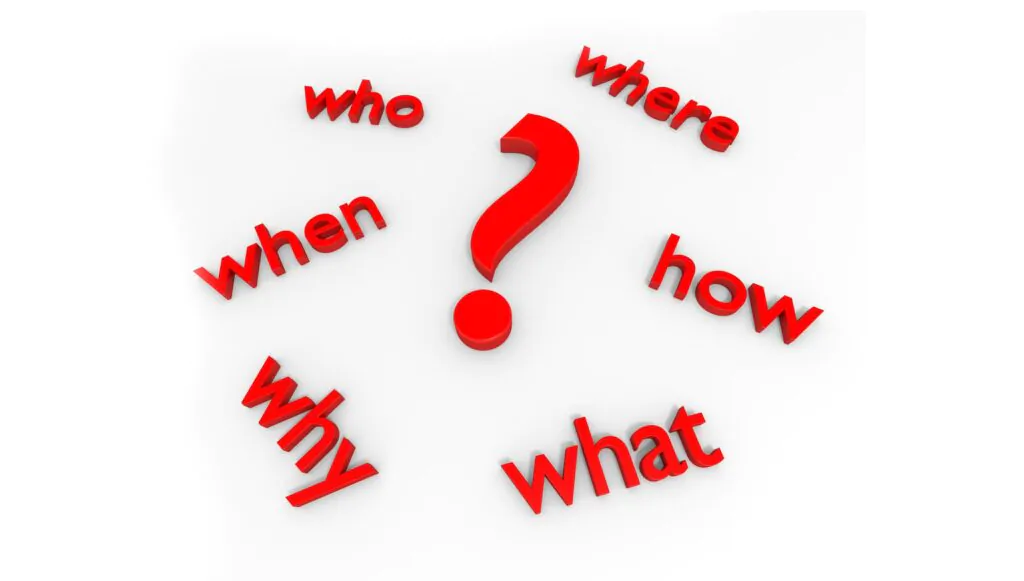Journalists write in a style that tells the news in an easy-to-read and efficient manner; learn how to write like a journalist in our guide.
You must know how to use specific writing techniques to write like a journalist. These techniques ensure that articles are engaging, easy to read, and have all the essential facts. Knowing the ins and outs of journalistic writing is helpful to add to your writing skills, even if you never write a news story. It is a writing style that allows you to distribute information efficiently while adding a specific structure to your penmanship.
All-in-all, knowing how to write like a journalist can make you a better writer, improve your social media copywriting skills, and even improve your content marketing techniques. If you are working as a journalist, or have aspirations to be a news writing whiz, then having journalistic writing skills is not just a helpful tool but an essential one.
Contents
- Step 1. Write Economically
- Step 2. Remember Not To Bury the Lede
- Step 3. Know The Five Ws
- Step 4. Remember the Basics
- Step 5. Gather More Information Than You Need
- Step 6. Learn From Others
- Step 7. Double-Check All Information Is Present
- Step 8. Work Creatively Within The Structure
- FAQs About How to Write Like a Journalist
Step 1. Write Economically
When studying at Cardiff University’s acclaimed School of Journalism, Media and Culture, the author of an article had an eagle-eyed professor. He would take a red pen and cross out every unnecessary word when marking work.
There were times when articles looked more like red sketch drawings because of all the markups. As frustrating as this was, this professor knew what he was doing. He had taught some of the best journalists in the world and had done the same to them. But, in doing so, he demonstrated that you would need to write economically to write like a journalist.
There are many reasons for this, but the key ones are as follows:
- When you are writing a story, you are often against a deadline. Thus, you should be able to get the key points of the news onto the page as quickly as possible.
- Unlike bloggers, when writing a news article, you do not have an unlimited word count. This is especially true if you are writing for a newspaper or magazine.
- Unnecessary words and sentences can bury the lede, leaving the reader unsure of the story’s key details and supporting details.
- Being economical doesn’t just mean getting rid of unnecessary words. It is also written in short sentences that are easy to read.
To summarize, your sentences should be short and snappy, while your paragraphs should be formatted so the information within each paragraph is related. Not only will this make your work more readable, but it will also make your editor’s job easier if they need to cut your word count down.
Step 2. Remember Not To Bury the Lede
You also need to know the inverted pyramid writing style when writing as a journalist. This involves structuring your articles so that the most important details are near the start.
It has become the predominant format of writing used within journalism and technical writing. That is because it gets all the important information across to the reader in short sentences that are easy to understand.
From there, you order the information of the story based on the order of importance. This prevents the most interesting information to the reader from being lost within a sea of background information. It also helps create a compelling story with which the reader is engaged from the beginning.
This New York Times article about the investigation into President Trump is an ideal example of the structure in use. It starts with the most relevant details, working its way down to detail the story’s background information. You might also be interested in learning how to write an article critique.
Step 3. Know The Five Ws

When filling out the details of a story, most journalists know that they should aim to fill in the five Ws. That is the ‘where, what, when who and why. All journalistic writing has its basis in the five Ws. Likewise, virtually all storytelling has its basis in those tenets.
If you are a news reporter collecting facts that will later be disseminated into a story, you need to search for the answers to the five Ws concerning your story. Consider this ‘Instagram owner Meta fined €405m over handling of teens’ data’ news article as an example.
The opening paragraph reads: “Instagram owner Meta has been fined €405m (£349m) by the Irish data watchdog for letting teenagers set up accounts that publicly displayed their phone numbers and email addresses.”
The where is ‘Ireland’, the what is ‘a fine for Meta’, the why is ‘because of its policies around teenagers’, and the who is ‘Meta and the Irish data watchdog’. They then cover the When in the next paragraph, which reads: “The Data Protection Commission confirmed the penalty after a two-year investigation into potential breaches of the European Union’s general data protection regulation (GDPR).”
This is a perfect example of journalistic writing, and that is because it covers both the inverted pyramid and the five Ws.
Step 4. Remember the Basics
When aiming to write like a journalist, you shouldn’t forget the basic writing tips you picked up from high school. After all, good journalistic writing is just good writing using a few extra tools.
At the same time, when trying to write well within a newsroom, you shouldn’t forget the basics of journalism either. For instance, the correct attribution of quotes and fact-checking should be carried out in news writing.
To write like a journalist, you must have the utmost respect for the truth. You should also stick to and use your news organization’s stylebook. For instance, you might write in a newsroom that uses the AP style or the New York Times stylebook. You must know the chosen style of the publisher you work for. If you don’t, check in with the editor and find out.
Step 5. Gather More Information Than You Need
One common mistake rookie journalists make is not collecting enough information for a good story. Once they get a line on the ‘where, why, when, who, and where, they think their job is done.
However, if you are thinking like a newshound, you will know that you need to delve into the ‘five Ws’ of the five Ws. Ultimately, this will make your job of writing like a journalist easier, and it will also allow you to dig deeper into stories.
For instance, you may know the where – but why was it there, when did it happen before, who led to it being there and why was it there?
Likewise, you might know the who – but who exactly are they, what brought them to that place, when they arrived, etc. In investigative journalism, having too much information is far more beneficial than having too little.
This might not seem like a writing tip. However, suppose you are sitting down at your keyboard with a shortage of information. In that case, you will realize that writing like a journalist is only accessible if you have a journalist’s information.
Step 6. Learn From Others
To write and think like a journalist, you should also be an avid reader and consumer of media, including social media copywriting, news articles, and technical writing, journalists are constantly learning from others in the field.
Successful journalists have an undying curiosity and often consume copious amounts of social media, podcasts, documentaries, and other forms of non-fiction. All-in-all, our point is that if you are to think like a journalist, you should be a curious consumer of art, media, and much, much more. Journalists want to learn about the world, which is one way they do that. So, naturally, this influences their writing greatly.
Step 7. Double-Check All Information Is Present

When writing as a journalist, you should know that a key portion of your job is distributing relevant information. Therefore, you should do your best to ensure that all the relevant information within a story is covered.
Journalists can’t simply type a question into a search engine and regurgitate the first piece of info they find. Instead, they need to do quality research through a variety of mediums. This can be mentioned if a certain piece of information is unavailable but relevant to the story.
An example would be if a winning lottery ticket were lost, but the holder didn’t know when they lost it. Here, you could write: “It is not clear exactly when the winning ticket was lost, but the holder claims that they had it when leaving the store.”
Step 8. Work Creatively Within The Structure
Like any form of writing, you can also be creative when writing like a journalist. But, of course, certain types of articles have more scope for this.
For instance, you must use your creativity when developing newspaper column ideas or deciding to do a feature article.
However, all writing is creative, as you have to be creative to put words to paper. Therefore, you shouldn’t be afraid to exercise creativity when writing a journalistic article.
FAQs About How to Write Like a Journalist
What qualifications do I need to be a journalist?
There are excellent journalism schools where prospective reporters leave with degrees relating to the profession. However, not all journalists have qualifications, with some reporters coming from other professions or being trained to do the job by the media organization.
What are the types of journalism?
There are many different types of journalism. Here are just a few: investigative journalism, broadcast journalism, sports journalism, business journalism, and entertainment journalism.